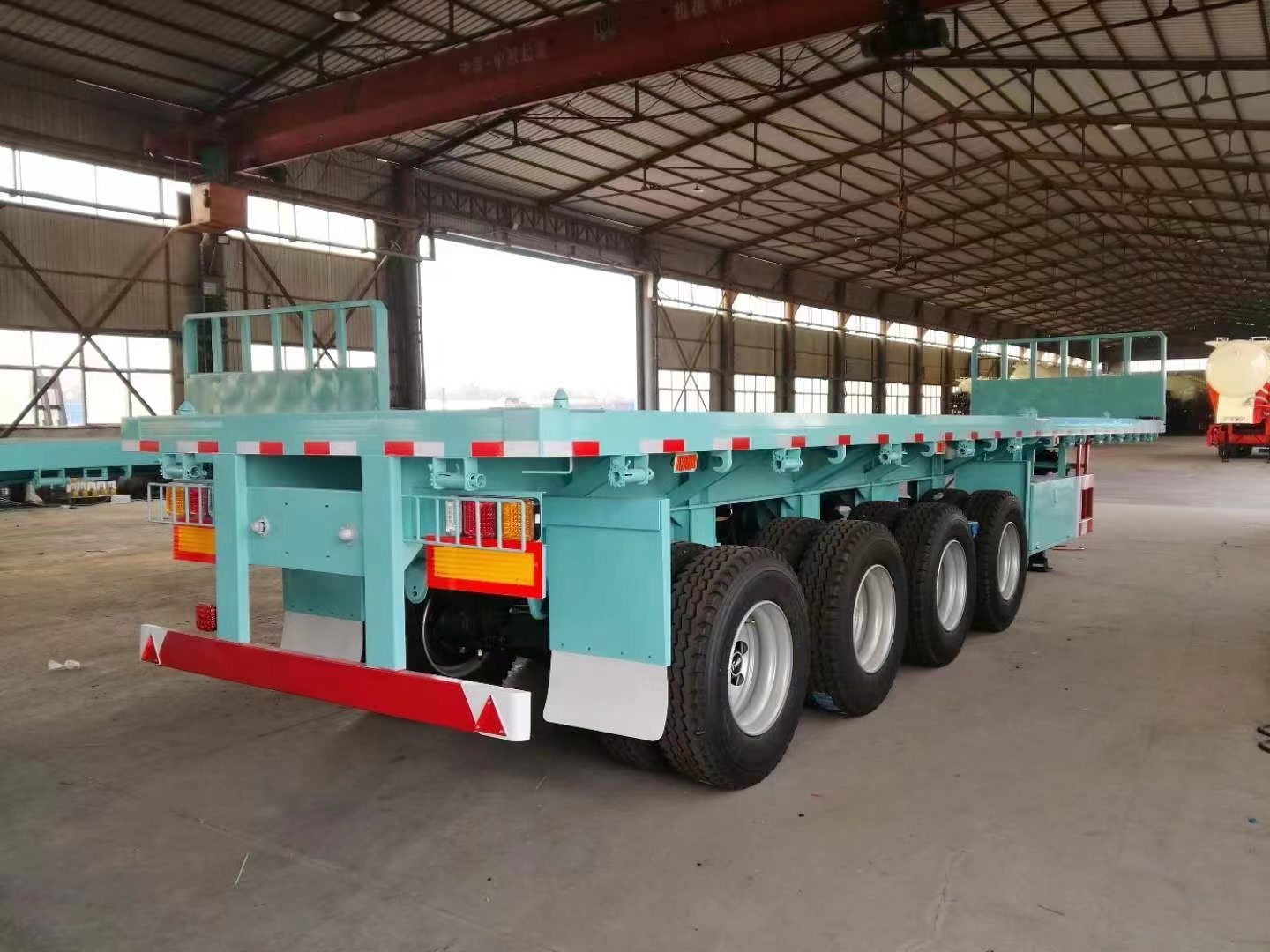Exploring the Foundation: Construction Materials of Flatbed Semi Trailers
2024-02-28
In the world of transportation and logistics, flatbed semi trailers play a crucial role in hauling a wide variety of goods and materials across vast distances. One of the fundamental aspects of these 4 axles flatbed semi trailers is the construction material used for their frame and deck. In this blog post, we'll delve into the significance of construction materials and explore the common choices for building the frame and deck of flatbed semi trailers.
Understanding the Importance of Construction Materials
The construction materials used in flatbed semi trailers determine their strength, durability, weight, and overall performance. These trailers are subjected to rigorous conditions and heavy loads, making the choice of materials a critical decision for manufacturers and operators alike. Let's examine the primary construction materials typically used for the frame and deck of flatbed trailers.
Steel
Steel is one of the most commonly used materials for constructing the frame and deck of flatbed semi trailers. Known for its exceptional strength and durability, steel provides the structural integrity necessary to withstand heavy loads and harsh operating environments. Additionally, steel trailers offer longevity and resilience against corrosion, making them suitable for long-term use in various industries.
Aluminum
Aluminum is another popular choice for constructing flatbed trailer frames and decks. While not as dense as steel, aluminum offers significant advantages in terms of weight reduction and corrosion resistance. Aluminum trailers are lighter, allowing for increased payload capacity and improved fuel efficiency. Moreover, aluminum's natural resistance to rust and corrosion makes it well-suited for transporting goods in humid or corrosive environments.
Composite Materials
In recent years, advancements in composite materials have led to their adoption in the construction of flatbed trailer components. Composite materials, such as fiberglass-reinforced plastic (FRP) or carbon fiber, offer a unique combination of strength, lightweight properties, and corrosion resistance. While less common than steel or aluminum, composite materials provide an alternative for operators seeking to optimize performance and durability.
Hybrid Designs
Some manufacturers employ hybrid designs that incorporate a combination of materials to achieve the desired balance of strength, weight, and cost-effectiveness. For example, a trailer may feature a steel frame with an aluminum or composite deck, capitalizing on the strengths of each material to enhance overall performance and longevity.
Conclusion
The construction materials used for the frame and deck of flatbed semi trailers play a pivotal role in determining their durability, performance, and suitability for various applications. Whether built from steel, aluminum, composite materials, or hybrid designs, each material offers unique advantages and considerations for operators. By understanding the characteristics and benefits of different construction materials, manufacturers and operators can make informed decisions to ensure the reliability and longevity of flatbed semi trailers in the demanding world of transportation and logistics.



